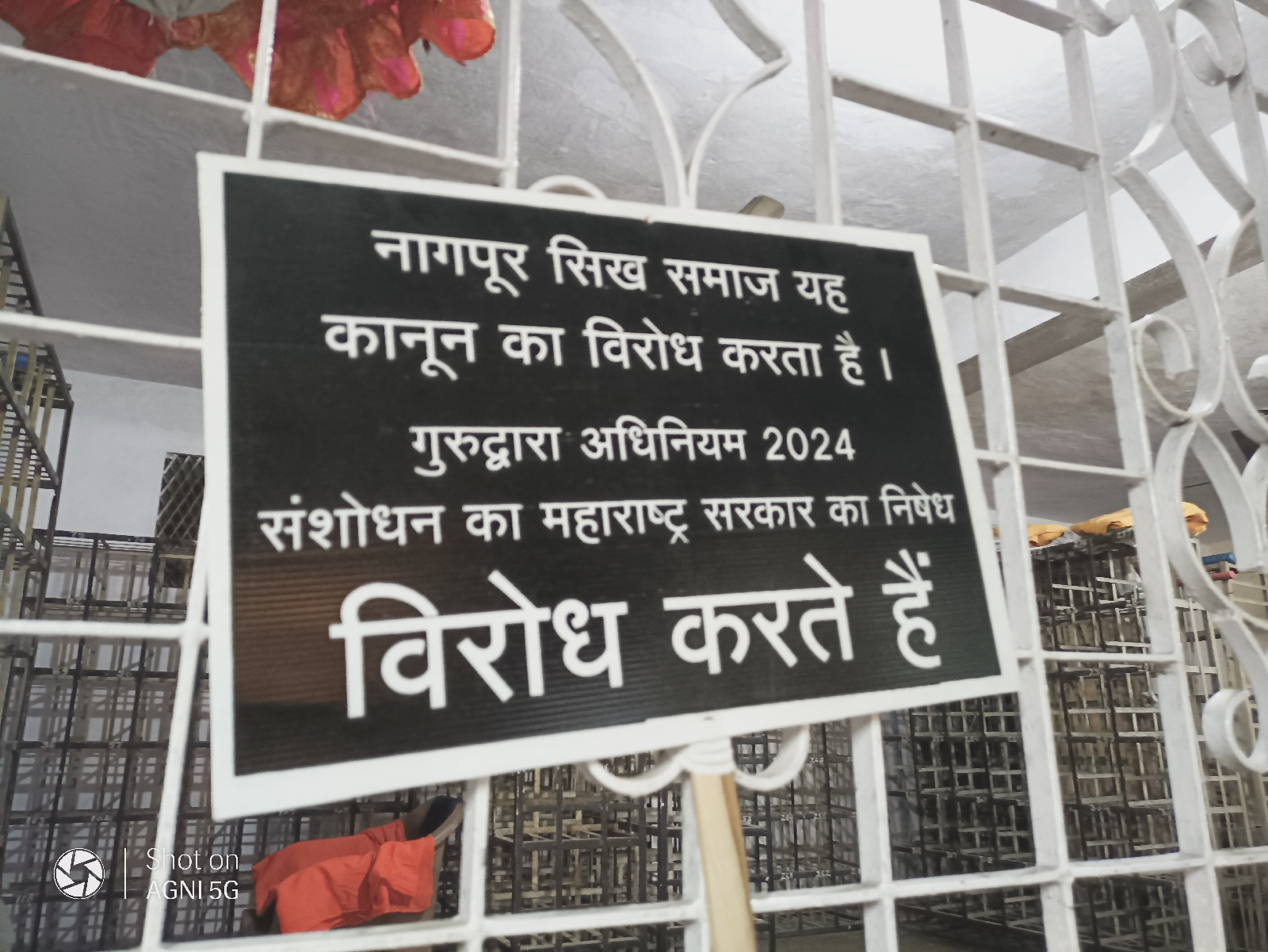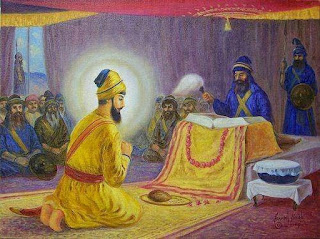Ambedkar; caste names in Punjabi movies; and why Christian conversions will never stop!
Any body who believes in the concept of 'ghar wapsi' or re-conversion back to the main religion must understand one thing. The people who left the main religion in the first place had certain grievances and they would not come back unless those grievances are dealt with and a safe space is created for them.
Any Hindu "cultural" organisation which wants Christian converts to come back to the Hindu fold requires the most important internal housekeeping, i.e., ridding themselves of the oppressive brahmanical caste system and treating the downtrodden as their own.
This exact concept was highlighted by the person who wrote the Constitution of India. His name was Dr Bhim Rao Ambedkar and he was a very learned legal luminary and also the representative of the rights of the lower castes. He created the Indian Constitution which was based on principles of egalitarianism. This means equality of all people. He, in his book (or rather a speech), also specified a few problems with the brahmanical caste system, some which are as follows:
1. The shastra dictated, birth based caste where the only person who can be teacher is a Brahmin, and notany one who is merely well versed as highlighted in the case by Ramdas, a Brahmin saint from Maharashtra who Dr Ambedkar says also inspired Shivaji to create a Hindu Raj. Ambedkar quotes Dasbodh, where Saitn Ramdas stated that an antyaja was not be considered a guru just because he is a pandit or 'learned'
2. In Peshwa Raj, the untouchable was not allowed to use public streets and carry a broom with him to wipe the street as he walked. He further stated discrimination in Balai community, the Kavitha incident from Gujarat and a case from Chakwara in Jaipur in his speech.
3. Manusmriti, according to Dr Ambedkar, prescribes heavy sentences as cutting off the tongue, or pouring of molten lead in the ears, of the Shudra who recites of hears the Vedas
The above and everything from Dr Ambedkar has been quoted from the speech linked here: LINK
On why the ghar wapsi is not possible and why the Christian missionaries have been able to convert large swathes of tribals in Christianity, and the failure of the Hindu sangathans to do the same as has been written by Dr Ambedkar as follows:
'The Hindus will probably seek to account for the savage state of the aborigines by attributing to them congenital stupidity. They will probably not admit that the aborigines have remained savages because they had made no effort to civilise them, to give them medical aid, to reform them, to make good citizens. But supposing a Hindu wished to do what the Christian missionary is doing for these aborigines, could he have done it? I submit not. Civilising the aborigines means adopting them as your own, living in their midst, and cultivating fellow-feeling-in short, loving them. How is it possible for a Hindu to do this? His whole life is one anxious effort to preserve his caste. Caste is his precious possession which he must save at any cost. He cannot consent to lose it by establishing contact with the aborigines, the remnants of the hateful anaryas of the Vedic Days'
He further stated that"
'Not that a Hindu could not be taught the sense of duty to fallen humanity, but the trouble is that no amount of sense of duty can enable him to overcome his duty to preserve his caste. Caste is, therefore, the real explanation as to why the Hindu has let the savage remain a savage in the midst of his civilisation without blushing, or without feeling any sense of remorse or repentance. The Hindu has not realised that these aborigines are a source of potential danger. If these savages remain savages, they may not do any harm to the Hindus. But if they are reclaimed by non-Hindus and converted to their faiths, they will swell the ranks of the enemies of the Hindus. If this happens, the Hindu will have to thank himself and his caste system.'When some communities wanted to raise their status and started dressing and behaving like Hindu upper castes, they were prohibited through legal sanctions by the higher castes. Dr Ambedkar gave examples of the Sonars and the Pathare Prabhus.
...the Hindu religion ceased to be a missionary religion when the caste system grew among the Hindus. Caste is inconsistent with conversion. Inculcation of beliefs and dogmas is not the only problem that is involved in conversion. To find a place for the convert in the social life of the community is another, and a much more important problem that arises in connection with conversion. That problem is where to place the convert, in what caste? It is a problem which must baffle every Hindu wishing to make aliens convert to his religion.'
Now, for a moment, replace all mentions of Hindus above with Sikhs. Replace the 'brahmin' with a jatt landlord. Replace all the oppression done by a higher caste Hindu by a landlord in Punjab who is busy creating separate Gurudwaras for himself in a typical Punjabi village which now has three Gurudwaras, one of the jatts, one of the valmiki/ramdasia sikhs and the third of let's say lubana or khatris (or bhappas). This phenomenon of having three Gurudwaras for different castes in the same village is the perfect anti thesis for what Sikhism stood for. This is not Sikhism and Guru Gobind Singh would be very sad to see this.
Sikhs can have differences with the Hindu religion, but one thing that they seem to not separate themselves from is the Hindu legacy of the caste system. The one singular proof of this is the way matrimonial advertisements for Sikhs are presented. The Sikh word is preceded by jatt, khatri, lubana, or other Hindu castes. Read more here: LINK
From Ambedkar's book, the 'Annihilation of Caste' (which was actually a speech he prepared for the Jat-Pat Todak Mandal or the Lets-break-caste forum) lets quote an important footnote, and see how much of it is true for ourselves:
On 13-14 April 1936, Ambedkar attended the Sikh Prachar Conference in Amritsar (50 km from Lahore). In his address he extolled the principle of equality within the Sikh community and alluded to the possibility of converting to Sikhism. Zelliot (2013,162) writes: 'There is an unverified story that Ambedkar spoke to a Sikh group at this time, asking them if they were willing to allow inter-marriage between Sikhs and new converts, and the Sikhs responded in the affirmative." For an analysis of why Ambedkar gave up on Sikhism, see Puri (2003, 2698), who says: "After participating in the Sikh missionary Conference at Amritsar in April, Ambedkar sent his son, Yashmwant Rao, and nephew to the Golden Temple in May, where they stayed for one month and a half, to observe the situation and meet the leaders of the community." Puri argues that perhaps the Shiromani Gurudwara Parbandhak Committee (SGPC) feared that "after six crore (60 million) untouchables became Sikhs" the clout of the dominant-caste Jats in the SGPC and the gurudwaras will be undermined.
The system of caste has been so mainstreamed in Punjab that it is part of the songs and movies, which are forms of contemporary folklore.
In one Punjabi movie, the main character was from the jatt 'caste' and the person who was subjected to comedy or ridicule was from the non-jatt khatri 'caste'. Through a very satirical way, the audience was shown that only the jatt is superior and the other city dwelling caste person is a stereotypical loser with clear indications of his regional/caste affiliation in the form of the printed turbans, the choice of occupations, and the potohari sounding dialect (eg. assan-tussan, which is of business people from north west part of undivided Punjab, who were mostly not agriculturists unlike jatts). Well, for people who want to see the Sikhs divided this is automatic propaganda, and these people may be the ones who want to assimilate Sikhism into the brahmanical caste system worldview.
The way Khalsa, the form of Sikhism which is defined to be a Sikh, has been created means that all the previous religious, caste or regional identities have been diluted to created a new religious order. This is the only and the truest form of Sikhism. In Sikhism there is no place for the Brahmanical caste system, which is a scourge that has plagued the Indian Subcontinent, with each and every reform movement trying to do away with it.
The Hope for Sikhism lies in what we were created as by our Gurus. We need to look no further than what the Gurus has already told us. The first and foremost is to rid ourselves of all associations from the Hindu legacy, esp. the caste system. The basis of caste system is the Hindu shastras which are something our gurus have completely shunned. See the following:'Since the day, I touched Thy Feet, I did not bring any other in my sight: Ram, Rahim, Purana and Quran speak of many others, but I do not believe in anyone of the Smritis, Shastras and Vedas tell of many aspects, but I do not know anyone. O Lord (the God)! because of Thy Grace, I did not say anything, but you said everything.'
-Guru Gobind Singh
'If we apply these considerations to castes among Mahomedans, Sikhs and Christians on the one hand, and to castes among Hindus on the other, you will find that caste among non-Hindus is fundamentally different from caste among Hindus. First, the ties which consciously make the Hindus hold together are non-existent, while among non-Hindus there are many that hold them together. The strength of the society depends upon the presence of points of contact, possibilities of interaction, between different groups which exist in it. These are what Caryle calls "organic filaments" ie, the elastic threads which help to bring the disintegrating elements together to reunite them.'Sikhs must realise that the single most important 'organic filament' they have has been given to them by their leader Guru Gobind Singh, who created a new identity for the Sikhs in the form of a monotheistic, egalitarian Khalsa; is the taking of Khande ki paul or the ceremonial water.
'From where does the Sikh or the Mahomedan derive his strength, which makes him brave and fearless? I am sure it is not due to relative superiority of physical strength, diet of drill. It is due to the strength arising out of the feeling that all Sikhs will come to the rescue of a Sikh when he is in danger.'

.JPG)







Comments
Post a Comment
Please share your view